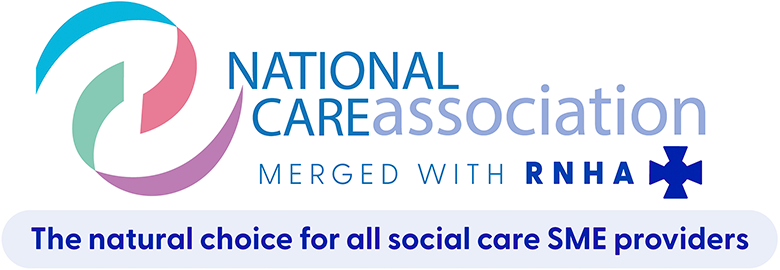21st December 2016
LPC HIGHLIGHTS NEW ANALYSIS ON THE IMPACT OF THE NATIONAL LIVING WAGE

APRIL 2016 £7.20 RATE RAISED PAY FOR LOW PAID WORKERS. 1.6M WORKERS PAID RATE, WITH RIPPLE EFFECTS FOR OTHER WORKERS
PRESENTS CHALLENGES FOR EMPLOYERS IN SECTORS INCLUDING SOCIAL CARE, CHILDCARE AND HORTICULTURE
MOST AFFECTED LOCAL AUTHORITIES FOR 2017 INCREASE to £7.50: WEST SOMERSET, TORRIDGE, ROSSENDALE, west devon, CASTLE POINT.
ONE IN SIX WORKERS aged 25 and over in these areas TO SEE A PAY RISE.
The National Living Wage (NLW) is delivering substantial gains in pay to workers but also presenting challenges for employers.
So finds the most detailed assessment of the NLW so far, carried out by the independent body that advises the Government on the rate, the Low Pay Commission, and launched today in London.
Commenting on the results, the Chair of the Commission Sir David Norgrove said:
‘The introduction of the National Living Wage in April 2016 raised pay, with about 1.6 million workers aged 25 and over covered by the introductory rate, and ripples some way up the pay distribution. Women, part-timers and younger workers particularly benefited. This is very welcome, albeit we do not yet know the wider effects. Early data do not so far suggest negative consequences for employment though employers in specific sectors highlight significant pressures.
Social care appears to have been helped by the Council Tax precept, but providers report that their medium-term sustainability remains at risk with many facing losses and some reports of withdrawal from contracts. The horticulture sector warns that high wage costs are a serious threat to the sector, risking viability towards 2020. The childcare sector in England is concerned about the interaction of higher wage costs with increased free hours. We will monitor these sectors closely’.
Key findings on the introductory rate of £7.20 include:
· The introductory rate delivered large increases in hourly pay for workers on the NLW: an annual increase of 10.8 per cent, three times that seen in the median hourly wage (3.1 per cent). The main rate of the minimum rate is now at its highest-ever level adjusted for inflation - whereas typical wages are 5-10 per cent below their real-terms peak (using CPI or RPI) and not expected to recover until the 2020s.
· The introductory rate meant a big increase in the reach of the minimum wage into the labour market: 1.6 million jobs held by workers aged 25 and over were paid at or below the NLW in April 2016 (6.7 per cent), compared with a million paid at or below the minimum wage for the same age group in April 2015 (4.3 per cent).
· A wider group of workers benefited: ripples up the pay distribution meant the bottom quarter of workers saw average hourly pay growth of nearly 6 per cent, with women and part-timers particularly benefitting with pay growth over 6 per cent and 8 per cent respectively.
· Younger workers also benefited with 7 per cent of 16-24 year old employees lifted above £7.20 in response to the rate. 69% were paid at or above the NLW in April 2016, up from 62% at the equivalent level in 2015.
· The relative increase was bigger in lower paid areas. In half of the countries and regions of the UK (Wales, Northern Ireland, East Midlands, West Midlands, the North East and Yorkshire and the Humber), the relative value of the NLW in 2016 will be higher than 60 per cent of typical earnings - the 2020 target for the country as a whole.
· Higher pay presents challenges for employers in preserving differentials between those on the minimum wage and slightly above, with the effect on that on employee progression and motivation. In cleaning and hospitality, very large proportions were on the NLW in 2016: around a third of workers aged 25 and over, with around one in four in hairdressing and food processing.
· We have identified no clear evidence in early data of changes in employment or hours arising from the NLW, with strong employment performance among the types of workers most likely to be on the NLW and no clear patterns in changes to employment or jobs. However low-paying sectors including horticulture, textiles and convenience stores have warned they reduced working hours, job growth or employment in response to the introductory rate, with concerns about future sustainability.
· Looking ahead, a higher NLW presents challenges for social care with providers reporting that their medium-term sustainability remains at risk, with many facing losses and some reports of withdrawal from contracts. The horticulture sector warns that high wage costs are a serious threat to the sector, risking profitability towards 2020.
· The introduction of the NLW may in some cases have led to higher non-compliance. Data on underpayment shows 306,000 minimum wage workers aged 25 and over were paid less than the applicable rate in April 2016 (1.3 per cent of the workforce or 19 per cent of coverage), compared with 158,000 in April 2015 (0.7 per cent of the workforce or 15 per cent of coverage). Much of the increase likely reflects temporary underpayment as the level is now measured at the start of the minimum wage year. The sectors with the highest proportions of workers aged 25 and over paid less than the NLW include hairdressing, hospitality, childcare, cleaning and transport.
· Squeezing of pay between minimum wage workers and those slightly above them varied by sector. Our analysis suggests that the biggest differences in pay increases between minimum wage workers and those slightly above last year were in office work and storage, hairdressing, textiles and transport. Hospitality, retail, cleaning and childcare tended to pass on more of the increases, likely reflecting already very compressed pay.
· Gains may in some cases have been offset by pay consolidation, as employers reduce wider reward and benefits to fund a higher basic wage. However, we find no significant change in use or levels of shift premium pay and overtime pay in the aggregate data so far.
Key findings on the forthcoming rate of £7.50 include:
· The April 2017 £7.50 rate will increase pay for typical minimum wage workers (26 hours) by £400 per year rising to nearly £600 for full-time minimum wage workers (38 hours). An increase of 4.2 per cent is, after the introduction of the National Living Wage in April 2016, the largest increase in the main rate of the minimum wage since 2006.
· The £7.50 rate will raise coverage - the number of workers paid at or below the NLW - by up to 390,000, from 1.6 million jobs (6.7 per cent of the cohort) in April 2016 to up to 2.0 million (8.3 per cent) in April 2017.
· The top ten local authorities with the highest proportion of workers set to receive higher pay from the April 2017 increase to £7.50 comprise: West Somerset (21% of workers paid below the equivalent level in 2016), Torridge (20%), Rossendale (19%), West Devon (19%), Castle Point (17%), NE Lincolnshire (17%), Melton (17%), East Northamptonshire (17%), Richmondshire (16%) and Breckland (16%).The ten local authorities with the lowest proportion of workers paid below this level comprise: City of London (1%), Runnymede, Spelthorne, Mole Valley, South Cambridgeshire, Oxford, Test Valley, Guildford, Surrey Heath and Hart (2%).
· The NLW is set to cover almost 3 million workers, or 12.4 per cent of workers aged 25 and over in 2020.
Notes
1. The Low Pay Commission is an independent body made up of employers, trade unions and experts whose role is to advise the Government on the minimum wage. The National Living Wage is the legally binding pay floor for workers aged 25 and over. The other minimum wage rates comprise: the 21-24 Year Old Rate, the 18-20 Year Old Rate and the 16-17 Year Old Rate.
2. The members of the Low Pay Commission comprise:
· David Norgrove, Chair
· Sarah Brown, Professor of Economics at the University of Sheffield
· Kay Carberry, TUC
· Neil Carberry, Director of Employment and Skills, CBI
· Clare Chapman, Non-Executive Director & Remuneration Committee Chair at Kingfisher PLC
· Richard Dickens, Professor of Economics, Sussex University
· Peter Donaldson, Managing Director, D5 Consulting Ltd
· John Hannett, General Secretary, Usdaw
· Brian Strutton, General Secretary, BALPA
3. The findings are being presented at a launch event on Tuesday in London. Press enquiries Email: lpc@lowpay.gov.uk Telephone 020 7211 8119; 07720212676. They are published in the LPC’s Autumn 2016 Report: https://www.gov.uk/government/publications/national-minimum-wage-low-pay-commission-autumn-2016-report
4. Estimates use the Annual Survey of Hours and Earnings 2016. For the analysis of the impact on £7.50 on local authorities, figures are workplace-based, rather than residence-based. We have measured the proportion of workers paid less than the 2016 equivalent level (£7.50 downrated by forecast average earnings). We can provide other local authorities on request.
5. Our recommendations for April 2017 (accepted by the Government and announced at the Autumn Statement) comprise:
| LPC 2016 recommendations for the minimum wage | 6m increase | Effective annual increase | Increase on Oct 2015 | ||||
| Rate | Oct 2015 | April 2016 | Oct 2016 (current rates in force) | April 2017 (new rates) |
|
|
|
| NLW | £7.20 | 7.20 | £7.50 | n/a | 4.2% | n/a | |
| 21-24 rate | 6.70* | (6.83) | 6.95 | 7.05 | 1.4% | 3.2% | 5.2% |
| 18-20 Rate | 5.30* | (5.43) | 5.55 | 5.60 | 0.9% | 3.1% | 5.7% |
| 16-17 Rate | 3.87 | (3.94) | 4.00 | 4.05 | 1.25% | 2.8% | 4.7% |
| Apprentice Rate | 3.30 | (3.45) | 3.40 | 3.50 | 2.9% | 4.5% | 6.1% |
6. The National Living Wage is different from the UK Living Wage and the London Living Wage. Differences include that: the UK Living Wage and the London Living Wage are voluntary pay benchmarks that employers can sign up to if they wish, not legally binding requirements; the hourly rate of the UK Living Wage and London Living Wage is based on an attempt to measure need, whereas the National Living Wage is based on a target relationship between its level and average pay; the UK Living Wage and London Living Wage apply to workers aged 18 and over, the National Living Wage to workers aged 25 and over. The Low Pay Commission has no role in the UK Living Wage or the London Living Wage.

















